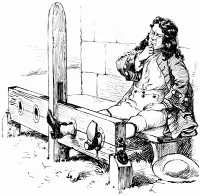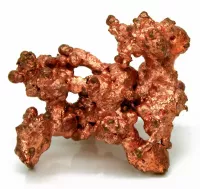Salmon is a term used to describe several species of commercially significant euryhaline ray-finned fish belonging to the genera Salmo and Oncorhynchus under the family Salmonidae. These fish are native to the tributaries of the North Atlantic (Salmo) and North Pacific (Oncorhynchus) basins. Other related fish in the same family include trout, char, grayling, whitefish, lenok, and taimen, all of which are coldwater fish found in subarctic and cooler temperate regions, with some isolated populations in Central Asia.
1908: Theodore Roosevelt's Observation on Fisheries Decline
In his 1908 State of the Union address, U.S. President Theodore Roosevelt observed that the fisheries were in significant decline. This observation was in the context of the Pacific salmon population, which had dramatically decreased to less than 1–3% of its size compared to when Lewis and Clark arrived in the region.
1913: Fraser River Salmon Catch Before the Slide
In 1913, the Fraser River salmon catch was significantly higher before the 1914 slide caused by the Canadian Pacific Railway at Hells Gate.
1914: Fraser River Salmon Population Affected by Slide
In 1914, a slide caused by the Canadian Pacific Railway at Hells Gate affected the Fraser River salmon population significantly, leading to a major decline in their numbers.
1917: Decline in Fraser River Salmon Catch
By 1917, the Fraser River salmon catch was reduced to one quarter of the 1913 catch, continuing the impact of the 1914 slide at Hells Gate.
1955: Completion of Chief Joseph Dam
In 1955, the Chief Joseph Dam was completed on the Columbia River, completely blocking salmon migration to the upper Columbia River system.
1990: Decline in Wild Atlantic Salmon Capture
In 1990, the capture of wild Atlantic salmon was relatively small and had been declining steadily. Nearly all captured wild salmon were Pacific salmon.
1990: Global Capture of Commercial Wild Salmon
In 1990, the global capture of commercial wild salmon reported to the FAO by different countries remained steady at about one million tonnes per year. This contrasts with farmed salmon production, which increased significantly from about 0.6 million tonnes to well over two million tonnes during the same period.
2003: First Nations Participation in Commercial Fisheries
In 2003, a report commissioned by BC's Ministry of Agriculture and Food found that there were 595 First Nation-owned and operated commercial vessels in the province, with 564 of them owned by First Nations members. However, employment within the industry had decreased by 50% in the last decade, affecting many fishermen who rely on salmon as a source of income.
2006: Health Impacts of Farmed Salmon
According to a 2006 study published in the Journal of the American Medical Association, the benefits of eating farmed salmon outweigh any risks imposed by contaminants such as dioxins and PCBs. While farmed salmon may contain higher levels of these contaminants compared to wild salmon, they still have a high omega-3 fatty acid content comparable to wild salmon.
2011: Wild Atlantic Salmon Capture Report
By 2011, the capture of wild Atlantic salmon had declined to just 2,500 tonnes. In contrast, about half of all farmed salmon were Atlantic salmon.
2020: Decline in Sizes of Wild Pacific Salmon
In 2020, researchers reported a widespread decline in the sizes of four species of wild Pacific salmon: Chinook, chum, coho, and sockeye. This decline had been occurring for 30 years and was thought to be associated with climate change and competition with growing numbers of pink and hatchery salmon.
Mentioned in this timeline
Climate change encompasses global warming and its far-reaching effects on...

Stocks were a type of restraining device historically used as...

Pink is a pale tint of red named after the...
Alaska a non-contiguous U S state in the northwest of...

Copper is a chemical element Cu atomic number known for...

The State of the Union Address is an annual message...
Trending

6 months ago Venice Preserves Banksy's Migrant Mural with Scaffolding to Protect Artwork.

Robert Hunter Biden is an American attorney and businessman son of former President Joe Biden He co-founded BHR Partners a...
2 months ago John Bolton faces potential indictment as federal prosecutors finalize charges next week.
21 days ago Snowstorm Expected to Hit Philadelphia and Pittsburgh on Tuesday: Forecast Details
2 months ago Six missing children found safe in Lancaster County after search by police.

2 months ago Halle Berry, 59, Celebrates Coastal Getaway in Stunning Bikini, Drawing Fan Acclaim.
Popular

Tucker Carlson is an American conservative political commentator known for...

Candace Owens is an American conservative political commentator and author...

XXXTentacion born Jahseh Dwayne Ricardo Onfroy was a controversial yet...

Ben Shapiro is a prominent American conservative political commentator media...

William Franklin Graham III commonly known as Franklin Graham is...

Bill Gates an American businessman and philanthropist revolutionized personal computing...
